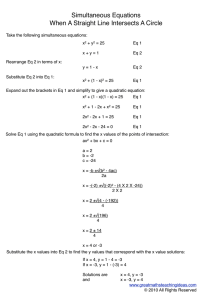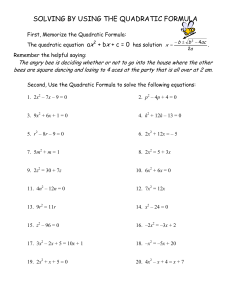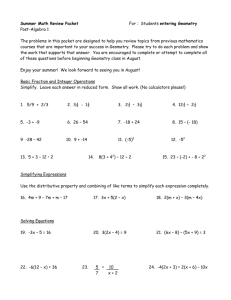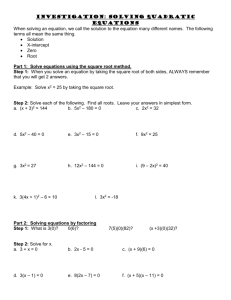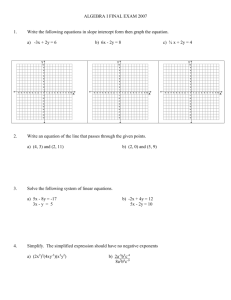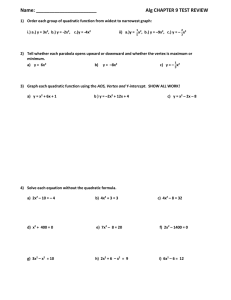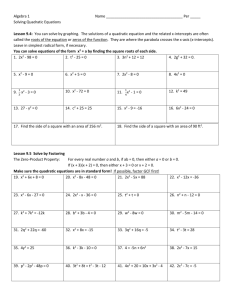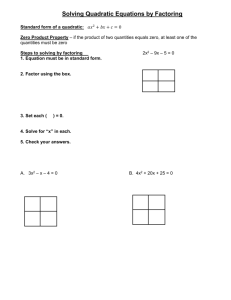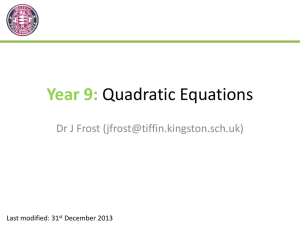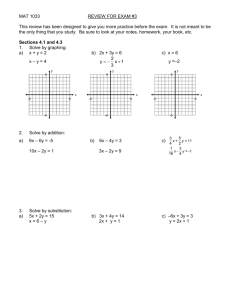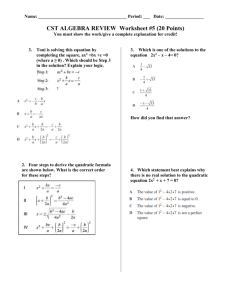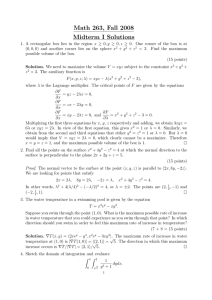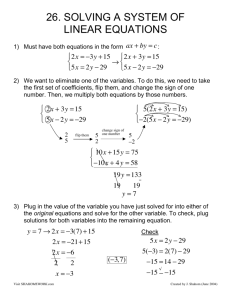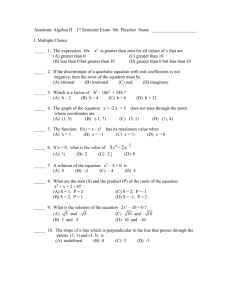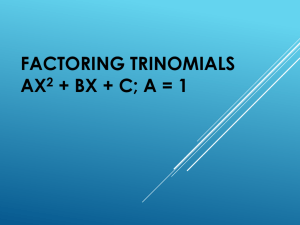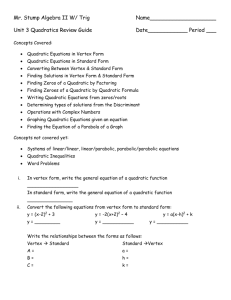Quadratic Equations 1. Solve the following equations: (a) x2 = 1 (b
advertisement
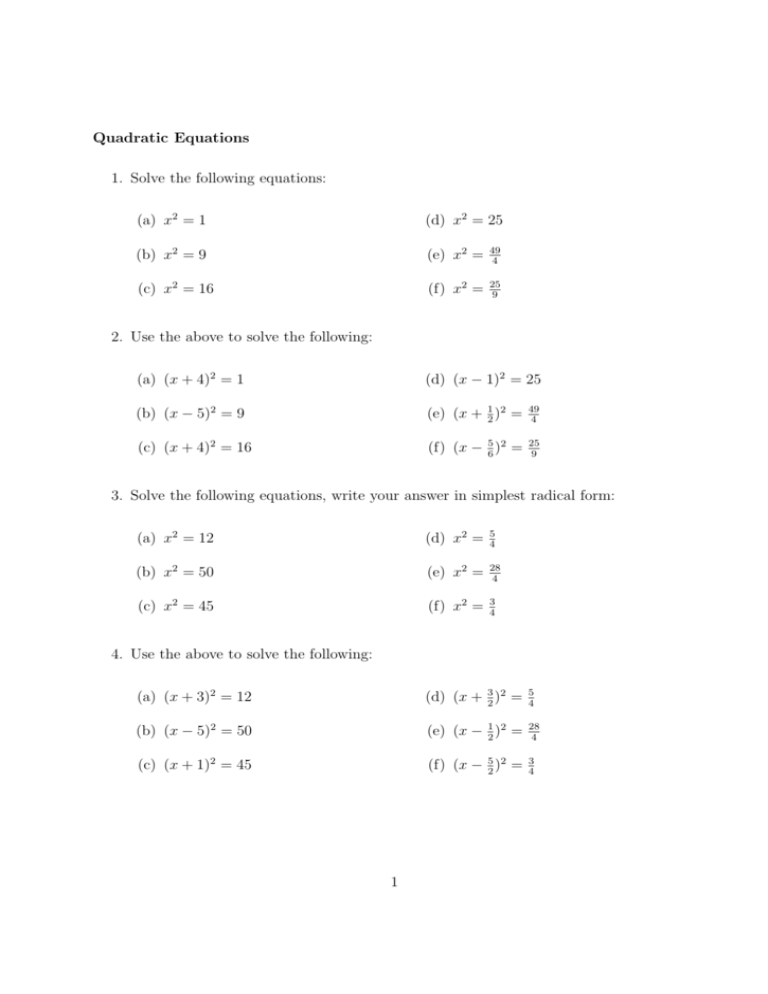
Quadratic Equations 1. Solve the following equations: (a) x2 = 1 (d) x2 = 25 (b) x2 = 9 (e) x2 = 49 4 (c) x2 = 16 (f) x2 = 25 9 2. Use the above to solve the following: (a) (x + 4)2 = 1 (d) (x − 1)2 = 25 (b) (x − 5)2 = 9 (e) (x + 21 )2 = 49 4 (c) (x + 4)2 = 16 (f) (x − 56 )2 = 25 9 3. Solve the following equations, write your answer in simplest radical form: (a) x2 = 12 (d) x2 = 5 4 (b) x2 = 50 (e) x2 = 28 4 (c) x2 = 45 (f) x2 = 3 4 4. Use the above to solve the following: (a) (x + 3)2 = 12 (d) (x + 23 )2 = 5 4 (b) (x − 5)2 = 50 (e) (x − 12 )2 = 28 4 (c) (x + 1)2 = 45 (f) (x − 25 )2 = 3 4 1 To make x2 + bx a “perfect square” add b 2 2 to obtain x2 + bx + b 2 2 = x+ b 2 2 This allows for a simple method of solving a quadratic equation. Add the appropriate number to both sides to write the left hand side as a perfect square, then procede as in the previous examples. Example 1: x2 − 10x + 16 = 0 x2 − 10x = −16 (x − 5)2 = −16 + 25 (x − 5)2 = 9 Here b = −10, 2b = −5, (−5)2 = 25 We obtain a perfect square by adding 25. Example 2: x2 + 3x + 1 = 0 x2 + 3x = −1 2 x + 32 = −1 + 2 x + 23 = 54 9 4 In this example b = 3, 2b = 32 , 3 2 2 = 9 4 Note that it is easier to work with fractions than decimals. Example 3: 2x2 − 10x + 11 = 0 2x2 − 10 = −11 x2 − 5x = − 11 2 2 x − 52 = − 11 + 2 2 x − 52 = 34 25 4 In this example we needed to divide by 2 to make the leading coefficient 1. 2 Solve the following quadratic equations as in the following example: x2 + 8x + 3 = 0 (x + 4)2 = 13 √ √ x + 4 = 13 or x + 4 = − 13 √ √ x = −4 + 13 or x = −4 − 13 x2 + 8x = −3 (x + 4)2 = −3 + 16 1. x2 − 6x + 3 = 0 5. 2x2 + 31x − 51 = 0 2. x2 + 7x + 2 = 0 6. 3. x2 + x − 1 = 0 7. 4x2 + 12x + 9 = 0 4. 2x2 − 6x − 5 = 0 8. 3x = 2(x2 − 1) 2 2 x 3 ax2 + bx + c = 0 3 −x+ 1 3 = 0 Hint: mulitply by 3.
